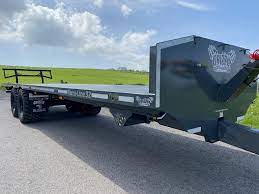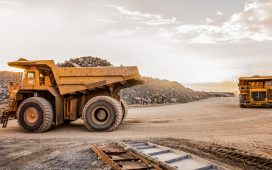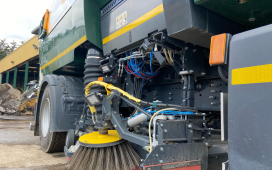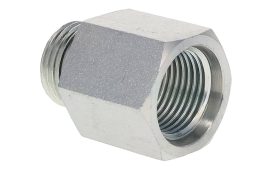Buying your first utility trailer can feel overwhelming, especially with so many options, sizes, and features on the market. Whether you’re hauling equipment for work, transporting ATVs for the weekend, or simply need a reliable trailer for general use, it’s important to choose the right trailer that fits your specific needs—and keeps you safe on the road.
In this guide, we’ll walk you through the key factors to consider when buying a utility trailer for the first time. Understanding these essentials will help you make a smart, informed purchase that serves you well for years to come.
1. Understand Your Hauling Needs
The first step in choosing the right utility trailer is clearly identifying how you’ll use it. Ask yourself:
- What types of items will I be hauling?
- How heavy are the loads?
- Will I need to transport equipment frequently or just occasionally?
- Will I use the trailer for work, recreation, or both?
If you’re a landscaper, you might need room for mowers and tools. If you’re a homeowner, perhaps you’re hauling furniture, mulch, or building supplies. The answers to these questions will help determine the trailer size, weight capacity, and features you’ll need.
2. Know the Weight Ratings
One of the most important considerations when buying a trailer is how much weight it can safely carry. Every trailer has a Gross Vehicle Weight Rating (GVWR), which includes the trailer’s own weight plus the maximum cargo it can handle.
You’ll want to ensure the GVWR of the trailer exceeds the total weight of what you plan to haul. Overloading a trailer can damage your equipment, reduce your control on the road, and put you—and others—in danger.
Also, make sure your vehicle’s towing capacity matches the trailer you choose. Check your owner’s manual or talk to a trailer expert to ensure compatibility.
3. Choose the Right Trailer Size
Utility trailers come in a variety of sizes, from compact 4×6 models to large 7×16 tandem axle trailers.
Here’s a quick reference:
- Small (4×6, 5×8): Best for small loads, yard work, or light-duty DIY projects.
- Medium (6×10, 6×12): Ideal for homeowners or small businesses hauling moderate loads.
- Large (7×14, 7×16 and up): Perfect for contractors, landscapers, or anyone needing to haul heavy equipment or multiple items.
Keep in mind: it’s often better to size up than to find yourself limited later.
4. Axle Type: Single vs. Tandem
The number of axles a trailer has affects its capacity, stability, and towing characteristics.
- Single Axle Trailers:
- Easier to maneuver
- More affordable
- Ideal for lighter loads (typically under 3,000 lbs)
- Easier to maneuver
- Tandem Axle Trailers:
- Can carry heavier loads
- Offer more stability, especially at highway speeds
- Include features like brakes and suspension systems
- Can carry heavier loads
If you plan to haul heavier items or drive longer distances, a tandem axle trailer is usually the better option.
5. Consider the Trailer’s Construction
Not all trailers are built the same. The materials and construction style will directly impact the trailer’s durability and lifespan.
Look for:
- Steel or aluminum frames: Steel is strong and affordable, but aluminum is lighter and resistant to rust.
- Pressure-treated wood floors: Great for durability, especially for outdoor use.
- Weld quality: Check for smooth, solid welds with no cracks or rust.
- Paint or powder coating: Quality coatings help prevent corrosion and weather damage.
A well-built trailer might cost a bit more upfront, but it will last longer and perform better in the long run.
6. Don’t Forget the Legal Requirements
Before hitting the road, make sure your trailer meets all local and state requirements.
This may include:
- Trailer registration and licensing
- Working lights and reflectors
- Safety chains
- Braking systems (often required for heavier trailers)
You should also verify whether your trailer needs to be inspected and if you need additional insurance. A reputable dealer will help walk you through these requirements.
7. Additional Features to Consider
Depending on how you’ll use your trailer, you may want to look for add-on features like:
- Ramps for easy loading and unloading
- Tie-down points or rails to secure cargo
- Mesh or solid side panels for better containment
- Spare tire mounts
- Toolboxes or lockable storage options
These features can make your trailer much more versatile and user-friendly.
8. Buy From a Trusted Dealer
Working with a knowledgeable and reputable trailer dealer makes a big difference—especially for first-time buyers. A good dealer will help you:
- Choose the right trailer for your needs
- Understand financing or payment options
- Get familiar with towing basics and safety tips
- Arrange for service or parts down the road
Don’t be afraid to ask questions or request a demo. The more informed you are before purchasing, the more satisfied you’ll be afterward.
Final Thoughts
Buying your first utility trailer doesn’t have to be complicated. By taking the time to assess your needs, understand key specs, and work with a reliable dealer, you can find the perfect trailer that supports your work, lifestyle, or business for years to come.
If you’re ready to take the next step, explore your options with a team that knows trailers inside and out—and can help you find the right fit without the guesswork. We recommend Grizzly Trailer Sales.















